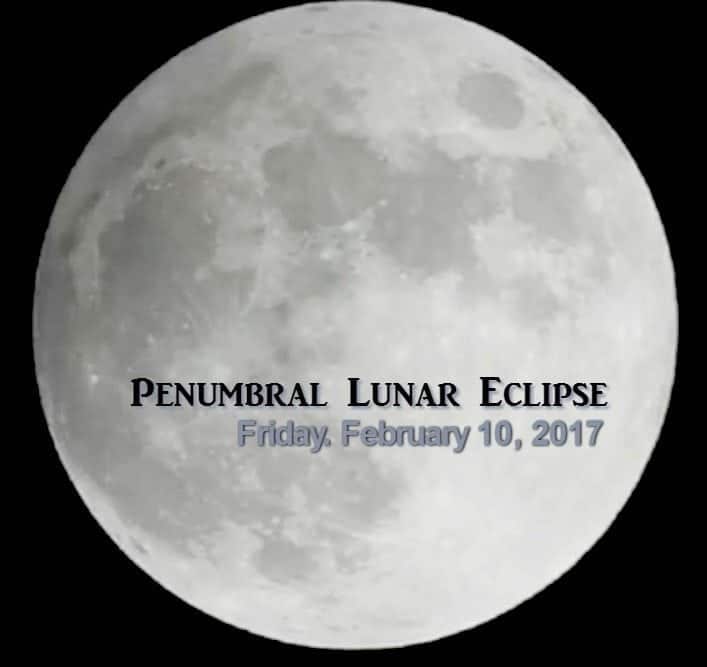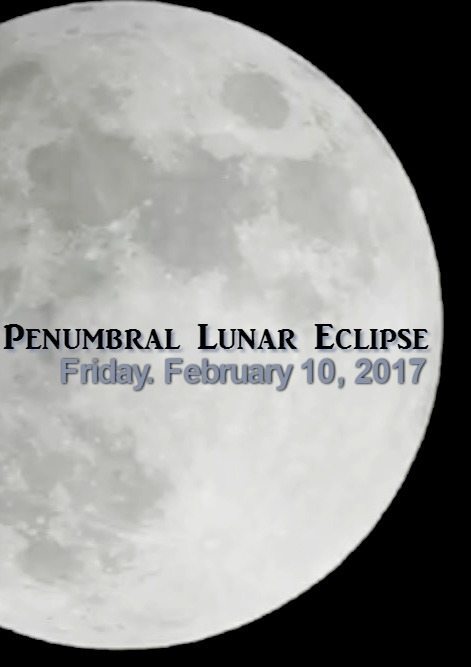Penumbral Lunar Eclipse – Were You Disappointed?
As the typical homeschooler, we diligently marked our calendar the minute we heard about the eclipse so we would remember to get outside to observe the Penumbral Lunar Eclipse on February 10th. And, we remembered. #homeschoolmamawin As we headed outside at the exact time we should have experienced the eclipse, nothing was happening. Well, at least not what I was expecting. We were so disappointed! So I thought there were probably other homeschool mamas who didn’t do their research first before heading outside. 🙂 #homeschoolmamafail But being the lifelong learners that we all are, we headed right back inside to see why this eclipse was so different. #homeschoolmamarecovery
On the evening of February 10th, we had a couple of different celestial events happening. The full moon in February is known as the snow moon. It wasn’t nearly as bright as the normal full moon because a Penumbral eclipse occurred at the same time!

What is a Snow Moon?
First, let’s figure out what exactly is a snow moon. I was surprised to learn this is just a nickname for the February full moon dating back to the native Americans. They gave nicknames to all the full moons in order to better be able to keep track of the years and the seasons. Since February generally has lots of snow, they picked that name for the February Full Moon. I had to research to find out if February is actually the “snowiest” month of the year, and as it turns out, it is not!
After learning about this, I wanted to learn about the other full moon names the Native Americans bestowed. And here they are listed out – thanks to the Farmer’s Almanac!
| January | Full Wolf Moon | This full Moon appeared when wolves howled in hunger outside the villages. It is also known as the Old Moon. To some Native American tribes, this was the Snow Moon, but most applied that name to the next full Moon, in February. |
| February | Full Snow Moon | Usually the heaviest snows fall in February. Hunting becomes very difficult, and hence to some Native American tribes this was the Hunger Moon. |
| March | Full Worm Moon | At the time of this spring Moon, the ground begins to soften and earthworm casts reappear, inviting the return of robins. This is also known as the Sap Moon, as it marks the time when maple sap begins to flow and the annual tapping of maple trees begins. |
| April | Full Pink Moon | This full Moon heralded the appearance of the moss pink, or wild ground phlox—one of the first spring flowers. It is also known as the Sprouting Grass Moon, the Egg Moon, and the Fish Moon. |
| May | Full Flower Moon | Flowers spring forth in abundance this month. Some Algonquin tribes knew this full Moon as the Corn Planting Moon or the Milk Moon. |
| June | Full Strawberry Moon | The Algonquin tribes knew this Moon as a time to gather ripening strawberries. It is also known as the Rose Moon and the Hot Moon. |
| July | Full Buck Moon | Bucks begin to grow new antlers at this time. This full Moon was also known as the Thunder Moon, because thunderstorms are so frequent during this month. |
| August | Full Sturgeon Moon | Some Native American tribes knew that the sturgeon of the Great Lakes and Lake Champlain were most readily caught during this full Moon. Others called it the Green Corn Moon. |
| September | Full Corn Moon | This full Moon corresponds with the time of harvesting corn. It is also called the Barley Moon, because it is the time to harvest and thresh the ripened barley. The Harvest Moon is the full Moon nearest the autumnal equinox, which can occur in September or October and is bright enough to allow finishing all the harvest chores. |
| October | Full Hunter’s Moon | This is the month when the leaves are falling and the game is fattened. Now is the time for hunting and laying in a store of provisions for the long winter ahead. October’s Moon is also known as the Travel Moon and the Dying Moon. |
| November | Full Beaver Moon | For both the colonists and the Algonquin tribes, this was the time to set beaver traps before the swamps froze, to ensure a supply of warm winter furs. This full Moon was also called the Frost Moon. |
| December | Full Cold Moon | This is the month when the winter cold fastens its grip and the nights become long and dark. This full Moon is also called the Long Nights Moon by some Native American tribes. |
What is a Penumbral Eclipse?
This eclipse is different from most other eclipses. This one is much more subtle and really only changes the moon to look like it has darkened.
Here is a video captured of the eclipse happening…
This graphic will help you see what is happening. So as you see, you will not see a chunk of moon covered up. The reason is that the moon is moving through the outer section of the earth’s shadow, per earthsky.org.

What you will probably see is a moon that looks washed in coffee! So if this is what you saw, then you saw exactly what you were supposed to see!

Don’t you just love life learning? Where life events lead us on a journey of knowledge and discovery? Want to learn more?








